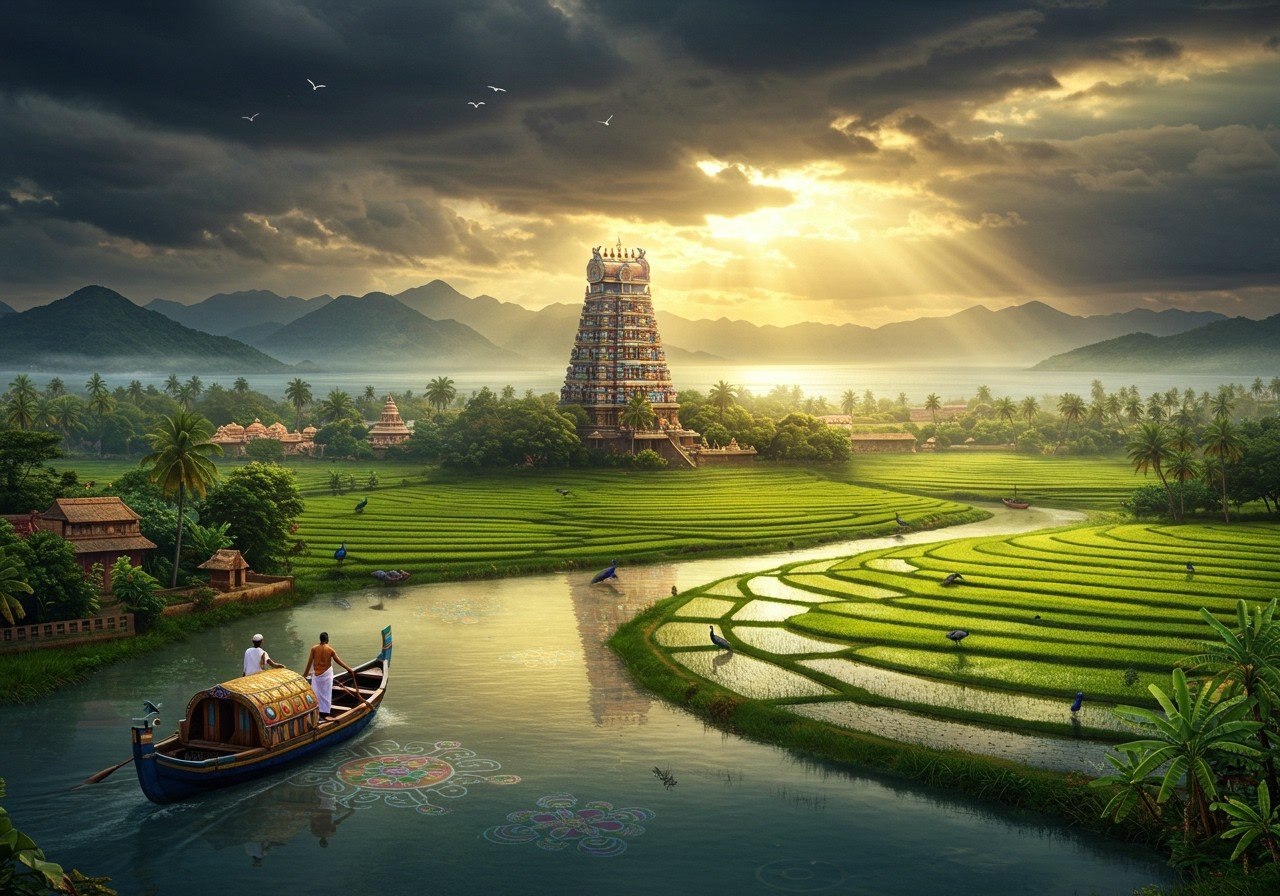
Welcome to a journey through Southeast India, a region renowned for its rich cultural heritage and diverse geographical features. This exploration delves into the unique landscapes, climates, and cultural nuances that define this vibrant area, encompassing Tamil Nadu, Andhra Pradesh, Telangana, and parts of Karnataka and Kerala.
Geographical Wonders of Southeast India
Southeast India presents a captivating tapestry of landscapes. The expansive Deccan Plateau dominates much of the region, an elevated terrain bordered by the remarkable Eastern Ghats, which run parallel to the coastline. These ancient hills significantly influence local weather patterns and harbor a rich variety of wildlife.
Coastal plains stretch along the Bay of Bengal, creating fertile grounds for agriculture, particularly rice and sugarcane cultivation. The eastern coastal plains are significantly wider than the western plains. The Godavari and Krishna rivers, vital lifelines of the region, flow through these plains, nurturing agriculture and communities.
The Nilgiri Biosphere Reserve, a biodiversity hotspot, safeguards unique flora and fauna. This ecologically significant area plays a crucial role in maintaining the region’s environmental balance.
Climate Rhythms of Southeast India
Southeast India predominantly experiences a tropical climate. The southwest monsoon, arriving in June, brings much-needed rainfall, essential for agriculture and replenishing water sources. The northeast monsoon, arriving in October, is particularly vital for Tamil Nadu and Puducherry.
The climate varies across the region. Coastal areas experience high humidity, while the highlands offer cooler temperatures. Climate change presents challenges, with unpredictable rainfall patterns and rising temperatures impacting livelihoods.
Cultural and Economic Significance
Geography deeply influences the cultural fabric of Southeast India. The diverse landscapes inspire traditional practices and shape livelihoods. Classical dance forms like Bharatanatyam reflect this intrinsic connection with nature. The Eastern and Western Ghats play a crucial role in influencing rainfall patterns and creating distinct microclimates within the region.
Agriculture flourishes in the fertile plains, while fishing sustains coastal communities. Geography also flavors regional cuisine, celebrated for its use of rice, spices, and coconut. Festivals linked to agricultural cycles strengthen community bonds through shared celebrations. This intricate link between geography and culture enriches Southeast India’s identity, fostering respect for tradition while adapting to modern challenges.
Poojn.in: Your Companion for South Indian Rituals
Poojn.in provides a wide selection of puja items tailored to the specific climate and cultural practices of South India. Recognizing the region’s tropical climate and coastal humidity, we offer durable brass and copper items ideal for rituals. Our offerings include traditional lamps (kuthu vilakku), copper kalashas, and specialized puja thalis designed for South Indian customs. We also provide organic coconut products and pure cotton vastrams suited for the warmer weather.
We ensure reliable delivery across South India, including remote areas. Our packaging is designed to protect items from humidity and heat. Browse our website or mobile app for a convenient shopping experience, complete with detailed product descriptions in regional languages.
- Explore our Bel malas crafted with durable materials suited for the region’s climate. These malas are perfect for daily prayers and rituals.
- Enhance your puja space with our marble dust Shiva Lingams, designed for both worship and decoration, adding a touch of sacredness to your home.
Visit poojn.in or download our app for a complete range of South Indian puja essentials.
Southeast India: A Legacy to Cherish
Southeast India is a vibrant tapestry woven with threads of geography, climate, and culture, each element intricately connected to daily life. From the majestic Eastern Ghats to the fertile coastal plains, every geographical feature plays a vital role in shaping the environment, nurturing communities, and preserving a unique biodiversity. The climate, influenced by the monsoons and varying temperatures, further enriches this tapestry, impacting agriculture, festivals, and everyday routines. Despite challenges like climate change, the people of Southeast India demonstrate remarkable resilience, drawing strength from their rich traditions and adapting to modern realities. As we celebrate this legacy, we embrace modern tools and resources that facilitate the preservation of our heritage, ensuring that the vibrant culture and traditions of Southeast India continue to thrive.
FAQs about Southeast India
What defines Southeast India? Southeast India encompasses Tamil Nadu, Andhra Pradesh, Telangana, and parts of Karnataka and Kerala, a region celebrated for its vibrant cultural heritage and varied landscapes.
Where is Southeast India situated? Southeast India lies in the southern part of India, bordered by the Bay of Bengal to the east, northeast of Sri Lanka. The region’s peninsular shape contributes to its diverse coastal ecosystems and climates.
What characterizes the climate of Southeast India? The climate is primarily tropical, with hot, humid summers, monsoon rains from June to September, and mild winters. The region’s average annual temperature is around 26°C, with May being the hottest month.
How does geography influence the climate? The Eastern and Western Ghats, along with the coastal plains, significantly impact rainfall patterns and create distinct microclimates. Coastal regions experience higher humidity due to their proximity to the Bay of Bengal. The southwest monsoon brings rainfall from the Arabian Sea, starting in Kerala in early June.
What are the prominent geographical features? The Eastern and Western Ghats, fertile coastal plains, and the extensive coastline along the Bay of Bengal are key geographical features. Major rivers like the Godavari, Krishna, and Kaveri flow through the region, supporting agriculture and shaping the landscape. The Deccan Plateau is a dominant feature, influencing the region’s overall topography.
Why is Southeast India important for biodiversity? Southeast India boasts diverse ecosystems, including rainforests, mangroves, and wetlands, supporting a wide range of plant and animal life. The Nilgiri Biosphere Reserve is a testament to this biodiversity. The region’s varied landscapes provide habitats for a wide array of species.
Are maps of Southeast India readily available? Yes, detailed maps showcasing geographical features and state boundaries are easily accessible both in print and online.
What is the impact of the monsoon season? The monsoon season is crucial for agriculture, replenishing water resources. However, it can also cause flooding in certain areas. The southwest monsoon (June-September) and northeast monsoon (October-November) play distinct roles in the region’s rainfall patterns.


